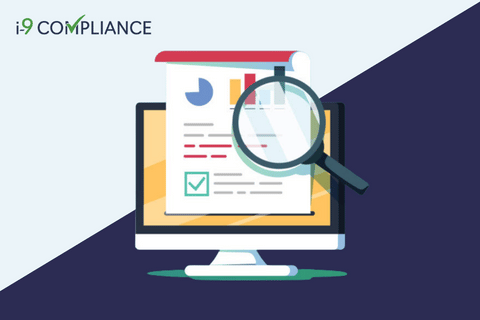What To Expect if Your Company Is Audited by ICE

November 10, 2022
Employers must complete Form I-9 for every employee they hire. This form confirms the employment eligibility of the individuals they hire. Furthermore, employers must carefully follow the regulations for completing Form I-9. In addition, the US Immigration and Customs Enforcement (ICE) and the US Department of Homeland Security (DHS) regularly audit employers to ensure they comply with the requirements. Here is what you can expect when expecting an audit:
First, you will receive a Notice of Inspection (NOI), which requires you to produce the requested documentation and forms within three business days. ICE can request the I-9s of all employees hired after November 6, 1986, whether current or previous employees. However, businesses do not have to hold these forms indefinitely. Instead, companies must maintain records for three years from the first day of an employee’s employment or one year from the date the employee faced termination, whichever proves longer.
According to ICE, once they complete the audit, they will notify the employer in writing and issue one of the following notices:
-
- “Notice of Inspection Results: Also known as a “Compliance Letter,” this notice is used to notify a business that it complies with applicable employee eligibility verification requirements.
-
- Notice of Discrepancies: Advises the employer that, based on a review of the Form(s) I-9 and any related documentation submitted by the employee(s), ICE has been unable to determine the employees’ eligibility to work in the US. The employer should provide the employee(s) with a copy of the notice and an opportunity to present ICE with additional documentation establishing valid US work authorization.
-
- Notice of Technical or Procedural Failures: Identifies technical or procedural failures found during the inspection of Form(s) I-9 and gives the employer at least ten business days to correct the forms. After this correction period ends, uncorrected technical or procedural failures will become substantive violations.
-
- Warning Notice: Issued when ICE finds substantive verification violations, but there is an expectation of future compliance by the employer. However, Warning Notices do not come up in the following circumstances: instances where: (1) the employer previously received a Warning Notice or a Notice of Intent to Fine; (2) the employer was notified of technical or procedural failures and failed to correct them within the allotted 10-business day period; (3) the employer had a 100% failure to prepare and present Form(s) I-9; (4) the employer hired unauthorized workers as a result of substantive violations; or, (5) there is any evidence of fraud in the completion of Form I-9 (e.g., backdating) on the part of the employer.
-
- Notice of Intent to Fine (NIF): May be issued for substantive violations, uncorrected technical or procedural failures, knowingly hiring violations, and/or continuing to employ violations.”
If an employer is issued a NIF and does not promptly request a hearing, ICE will issue a Final Order detailing any criminal and/or civil sanctions.
According to ICE, when determining the base amount for an employer’s fine, “the number of substantive violations/uncorrected technical or procedural failures and knowingly hiring/continuing to employ violations will be divided by the number of Forms I-9 that should have been presented for inspection.” This number is the violation percentage used to determine the civil penalty’s minimum and maximum base fine amount. This amount could vary based on whether this is the first, second, third, or higher offense. In addition, the following five statutory factors influence the amount:
- The size of the business;
- The good faith of the employer;
- The seriousness of the violation(s),
- The involvement of unauthorized worker(s); and
- The history of previous violation(s).
In the past few years, the number of audits and the value of fines have increased. These increases mean that, more than ever before, employers must ensure compliance with Form I-9 requirements. The best way to do this is with a Form I-9 management tool. This tool can provide employers with step-by-step guidance and helpful reminders to ensure uniform compliance. It also offers simple and secure storage of forms and documentation.
Automate your employment eligibility verification today with the ensured compliance of I-9 Compliance.